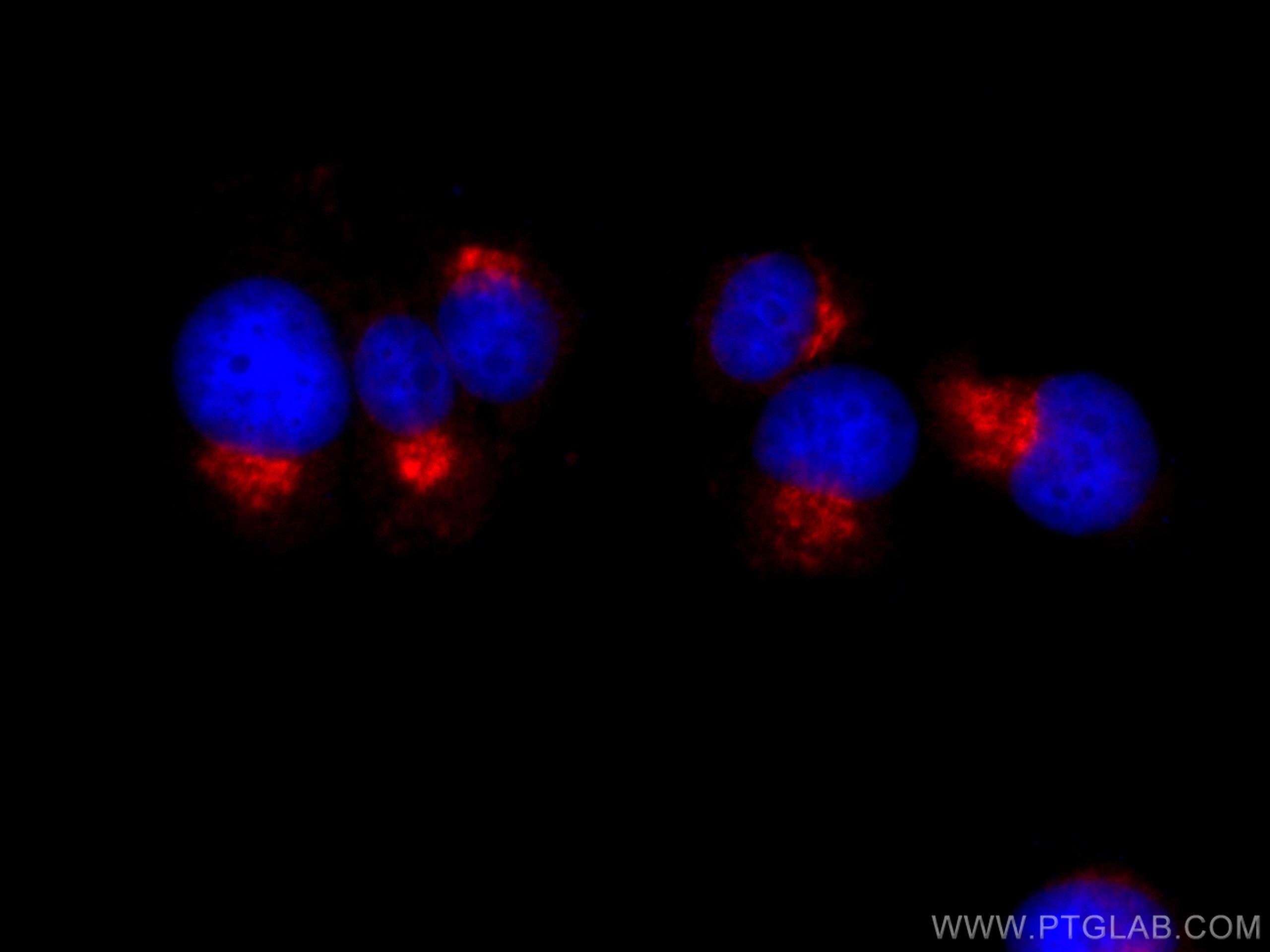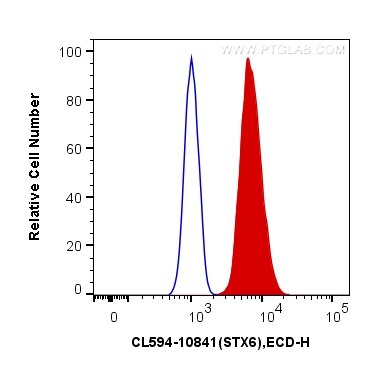Tested Applications
| Positive IF/ICC detected in | PC-12 cells |
| Positive FC (Intra) detected in | PC-12 cells |
Recommended dilution
| Application | Dilution |
|---|---|
| Immunofluorescence (IF)/ICC | IF/ICC : 1:50-1:500 |
| Flow Cytometry (FC) (INTRA) | FC (INTRA) : 0.40 ug per 10^6 cells in a 100 µl suspension |
| It is recommended that this reagent should be titrated in each testing system to obtain optimal results. | |
| Sample-dependent, Check data in validation data gallery. | |
Product Information
CL594-10841 targets Syntaxin 6 in IF/ICC, FC (Intra) applications and shows reactivity with human, mouse, rat samples.
| Tested Reactivity | human, mouse, rat |
| Host / Isotype | Rabbit / IgG |
| Class | Polyclonal |
| Type | Antibody |
| Immunogen |
CatNo: Ag1284 Product name: Recombinant human STX6 protein Source: e coli.-derived, PGEX-4T Tag: GST Domain: 1-255 aa of BC009944 Sequence: MSMEDPFFVVKGEVQKAVNTAQGLFQRWTELLQDPSTATREEIDWTTNELRNNLRSIEWDLEDLDETISIVEANPRKFNLDATELSIRKAFITSTRQVVRDMKDQMSTSSVQALAERKNRQALLGDSGSQNWSTGTTDKYGRLDRELQRANSHFIEEQQAQQQLIVEQQDEQLELVSGSIGVLKNMSQRIGGELEEQAVMLEDFSHELESTQSRLDNVMKKLAKVSHMTSDRRQWCAIAILFAVLLVVLILFLVL Predict reactive species |
| Full Name | syntaxin 6 |
| Calculated Molecular Weight | 29 kDa |
| Observed Molecular Weight | 32 kDa |
| GenBank Accession Number | BC009944 |
| Gene Symbol | Syntaxin 6 |
| Gene ID (NCBI) | 10228 |
| RRID | AB_2919749 |
| Conjugate | CoraLite®594 Fluorescent Dye |
| Excitation/Emission Maxima Wavelengths | 588 nm / 604 nm |
| Form | Liquid |
| Purification Method | Antigen affinity purification |
| UNIPROT ID | O43752 |
| Storage Buffer | PBS with 50% glycerol, 0.05% Proclin300, 0.5% BSA, pH 7.3. |
| Storage Conditions | Store at -20°C. Avoid exposure to light. Stable for one year after shipment. Aliquoting is unnecessary for -20oC storage. |
Background Information
Syntaxin-6 (STX6) is a SNARE protein located in the trans-Golgi network (TGN) and endosomes. It associates with a variety of SNARE proteins and is involved in intracellular vesicle trafficking. STX6 is required for sorting proteins from endosomes toward either the TGN or lysosomes.
Protocols
| Product Specific Protocols | |
|---|---|
| FC protocol for CL594 Syntaxin 6 antibody CL594-10841 | Download protocol |
| IF protocol for CL594 Syntaxin 6 antibody CL594-10841 | Download protocol |
| Standard Protocols | |
|---|---|
| Click here to view our Standard Protocols |






